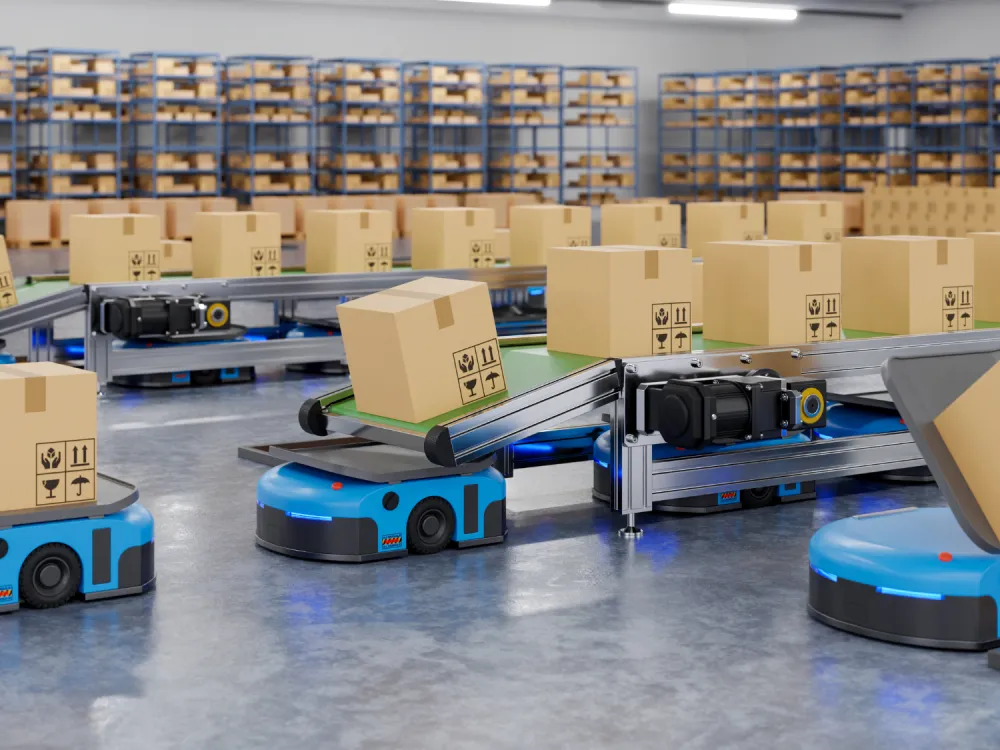
Packaging warehouse
How Smart Packaging is Set To Transform Product Interaction and Safety
Smart packaging is revolutionising the packaging industry. When we talk about smart packaging, we’re talking about the integration of advanced technologies such as shrink wrap machinery to extend packaging beyond just protecting and containing products. This article explores the key aspects of smart packaging, including its types, benefits, challenges, and future trends.
Understanding Smart Packaging
Smart packaging encompasses two main types: active and intelligent packaging.
Active Packaging
Active packaging actively interacts with the product or environment to enhance product quality and shelf life. Examples include:
- Food packaging with oxygen scavengers to preserve freshness.
- Electronics packaging with moisture control systems to prevent damage.
- Packaging materials with antimicrobial agents to prevent bacterial growth.
Intelligent Packaging
Intelligent packaging incorporates technology to provide information about the product's condition. Key applications are:
- QR codes or NFC tags for product information and authentication.
- Time-temperature indicators to monitor product freshness.
- Sensors for real-time tracking of perishable goods.
- Benefits of Smart Packaging
The advantages of smart packaging are significant:
Product Safety: Monitoring conditions like temperature ensures safety and quality.
Extended Shelf Life: Active packaging techniques like oxygen absorption prolong product freshness.
Supply Chain Efficiency: Features like real-time tracking enhance logistics operations.
Consumer Engagement: Technologies such as QR codes improve interaction with products.
Waste Reduction: Minimising spoilage, smart packaging reduces waste.
Challenges Facing Smart Packaging
Despite the many potential advantages, however, smart packaging faces certain hurdles:
Cost: Advanced technologies can increase packaging costs.
Environmental Impact: The use of materials, especially electronics, raises sustainability concerns.
Complexity: Integrating technology into packaging requires specialised knowledge and complicates manufacturing.
So What Is In Store For The Future of Smart Packaging
Emerging trends in smart packaging include:
IoT and AI: Enhanced connectivity and data analysis will become more common.
Sustainability: Development of eco-friendly materials is a priority.
Wider Adoption: Industries like food, pharmaceuticals, and electronics are increasingly utilising smart packaging for its benefits.
Conclusion
As smart packaging continues to evolve, its impact is increasingly felt across the global supply chain, sustainability trends, and the suitability of packaging for different products.
Impact on Global Supply Chain
Smart packaging technologies are poised to revolutionise global supply chain management. The integration of real-time tracking sensors, for instance, provides unparalleled transparency and traceability of products from manufacturer to consumer. This ability to monitor products throughout their journey not only enhances logistics efficiency but also significantly reduces the risk of counterfeiting and loss. As supply chains become more complex and globalised, smart packaging stands as a critical tool in ensuring the integrity and reliability of product delivery.
Sustainability Trends
Sustainability is another critical area where smart packaging is making significant strides. As environmental concerns become more pressing, the packaging industry is under increasing pressure to reduce its ecological footprint. Smart packaging is addressing this challenge in several ways:
Development of Eco-Friendly Materials
There is a growing trend towards using biodegradable and recyclable materials in smart packaging, thereby reducing waste and environmental impact.
Reduction of Spoilage and Waste
Through technologies like time-temperature indicators and oxygen scavengers, smart packaging reduces the spoilage of perishable goods, thereby minimising food waste and contributing to more sustainable consumption patterns.
Efficiency in Resource Utilisation
By extending shelf life and improving supply chain efficiency, smart packaging leads to more efficient use of resources, contributing to a more sustainable production and consumption cycle.
Suitability for Different Products
The versatility of smart packaging makes it suitable for a wide range of products, each benefitting in unique ways:
Food and Beverage Industry
Here, the focus is on freshness and safety. Smart packaging technologies like oxygen scavengers and time-temperature indicators help in maintaining quality and extending shelf life.
Pharmaceuticals
In this sector, ensuring the integrity and authenticity of products is paramount. Smart packaging offers solutions like tamper-evidence features and real-time tracking to maintain the highest standards of safety.
Electronics
For electronics, protection from environmental factors like moisture is crucial. Smart packaging with moisture control systems ensures the longevity and functionality of these products.
Consumer Goods
In consumer goods, engagement and interaction are key. Technologies such as QR codes and NFC tags in packaging enable brands to connect with consumers, offering additional product information and enhancing the user experience.
Looking Ahead
As we look towards the future, it is evident that smart packaging will continue to play a pivotal role in shaping various aspects of product interaction and safety. Its adaptability to different industries, coupled with its potential to address sustainability concerns and improve supply chain efficiency, positions smart packaging as a critical element in the ongoing evolution of packaging technologies. Its continued development and integration will undoubtedly redefine how we interact with, transport, and consume products in an increasingly connected and environmentally conscious world.


